Rural Technology
When Lange arrived on Long Island in 1870, he found its inhabitants using the vast majority of the land for farming. Many of the artist's early paintings suggest the importance of family farms and homesteads during this time. A number of key innovations helped along their successes, two of which appear over and over again in Lange's work: the windmill water pump and the sickle bar mower. These new technologies offered an opportunity for a farmer to transfer labor from themselves or another farmhand to a machine. With the help of these tools, agricultural production increased tenfold.
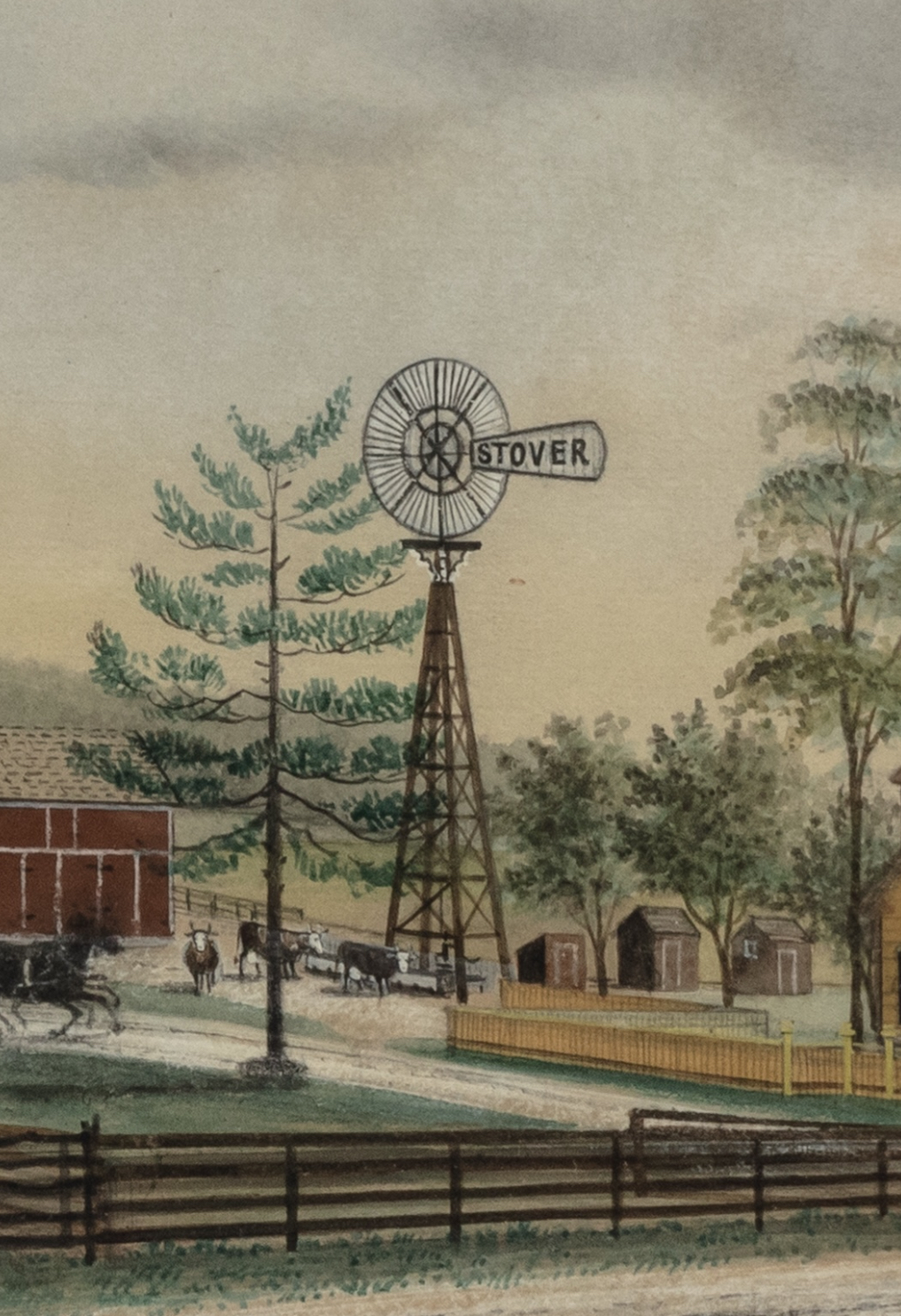

(left) Detail, Edward Lange (1846-1912), Carman's Peach Farm, n.d., Watercolor and gouache on paper, 17.1875 x 24.125 in. (framed), Huntington Historical Society, 1990.2; (right) Detail, Edward Lange, (1846-1912) [Artist], Northport. L.I., ca. 1886-1889, Albumen print, 7.375 x 12.875 (unframed), Northport Historical Society, 2021.21.6
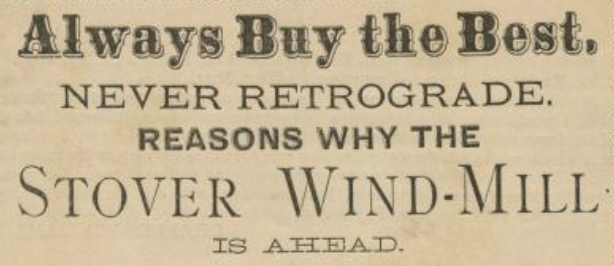
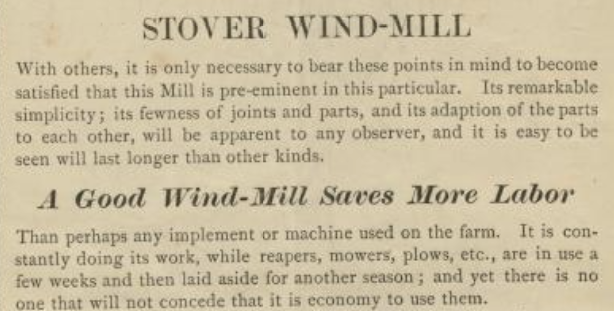
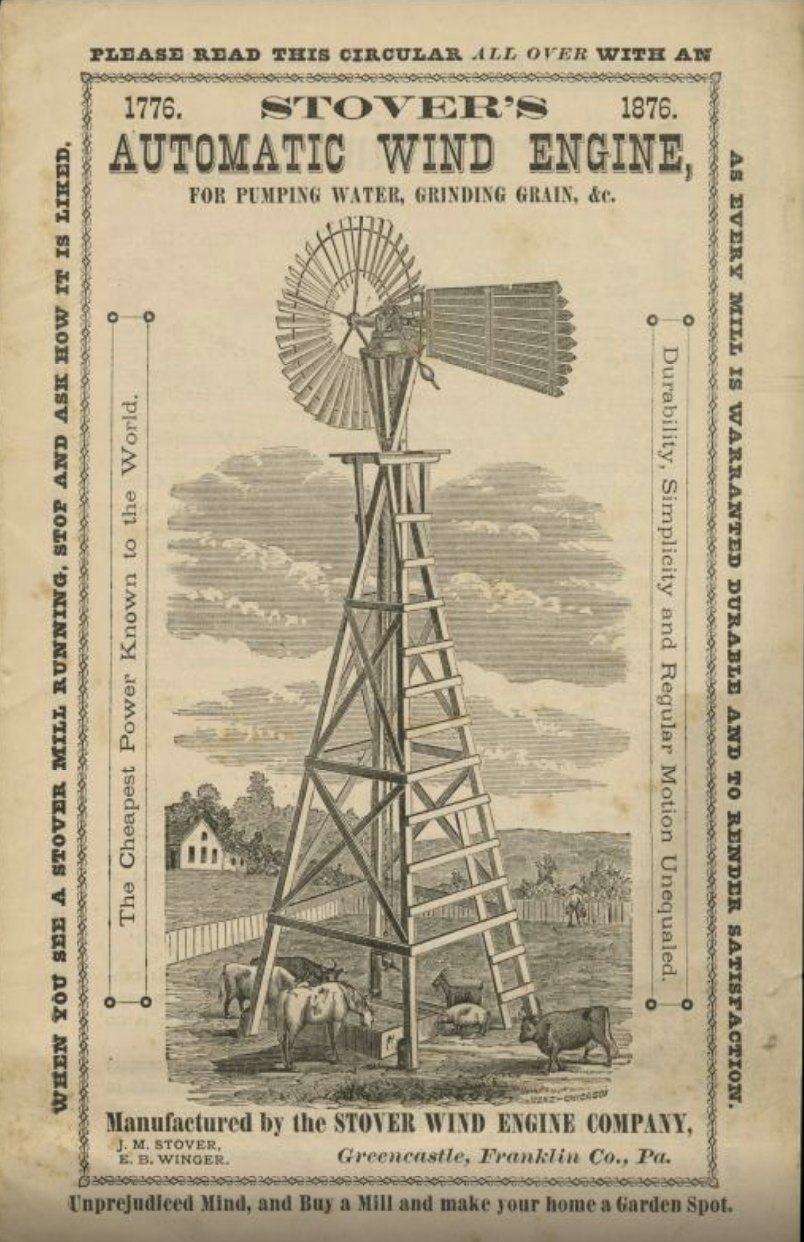
Details, Stover Wind Engine Company, Stover's Automatic Wind Engine for Pumping Water, Grinding, &c., 1876, Ink on paper, 9.125 x 5.75 in., From the Collections of The Henry Ford, 90.219.91
Stover windmills became increasingly present throughout Long Island's landscape during the 1880s and are found scattered thoughout the marginalia and backgrounds of Lange's subjects. These "wind engines" offered a near constant power source (as long as there was wind) and could be used for multiple purposes, most commonly to pump water. Windmills had always been a part of European and American rural life, however, the smaller and mass-produced Stover wind engine was more affordable for the average farmer. Notice how the company marketed its product in this trade catalogue from 1876, emphasizing that it would save labor and continue working even while its owner was not. These were "automatic" engines, capable of functioning outside of human direction—a novel and appealing concept for folks of the late-nineteenth century.
Edward Lange (1846-1912). Home of Carll S. Burr Esqr. Comac L.I., 1885. Watercolor and gouache on paper, 13.625 x 20 in. (unframed); 20.8125 x 27 in. (framed). Preservation Long Island, Gift of Mr. Valdemar F. Jacobsen, 2006.13.1
Soon enough, the Stover Wind Engine Company marketed these devices to audiences outside the commercial agriculture business. Wealthy individuals who could afford Stover windmills for their personal estates seized the same opportunity to increase efficiency. In the age of Victorian industrialization no corner of society was immune to the influence of "progress" or "advancement", least of all the domestic sphere.
Edward Lange (1846-1912), Setauket, L.I., n.d., Watercolor and gouache on paper, 14.5 x 30.750 in. (unframed); 22 x 38.25 in. (framed), Long Island Museum, Gift of Mr. and Mrs. Ward Melville, 1976, 1976.017.0058
Out in the fields, agricultural labor changed just as much. The days of working a field by hand faded away as farmers adopted new machinery. One example of this shift can be found in haying practice, an oft-frequented subject in the margins of Lange's work. Using a scythe to harvest hay took time and energy, its produce limited by the physical exertions of an individual. By the 1860s and 1870s, a new tool for harvesting hay cropped up throughout Long Island: the sickle bar mower.
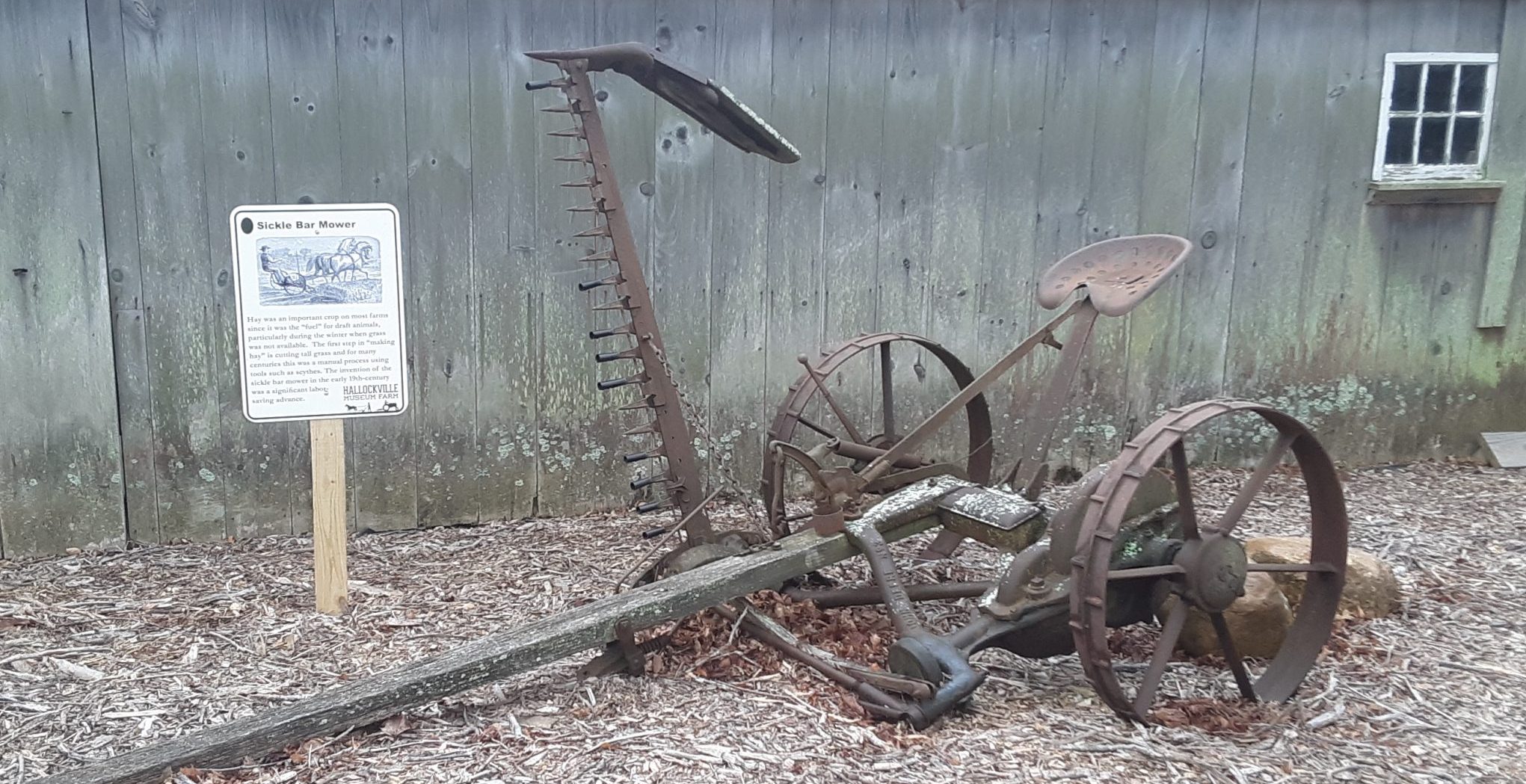
Sickle Bar Mower, ca. 1860, Courtesy of Hallockville Museum Farm
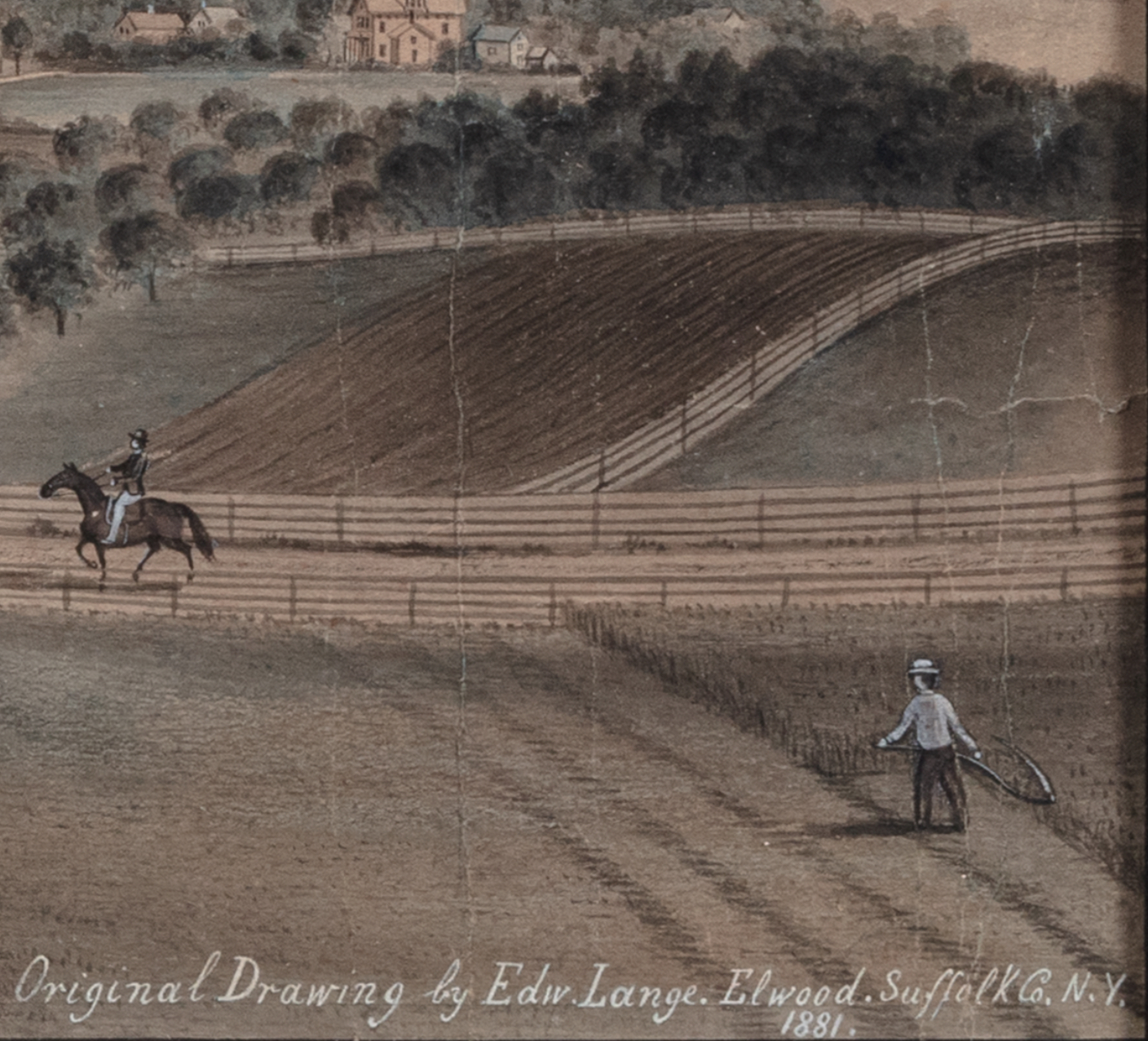
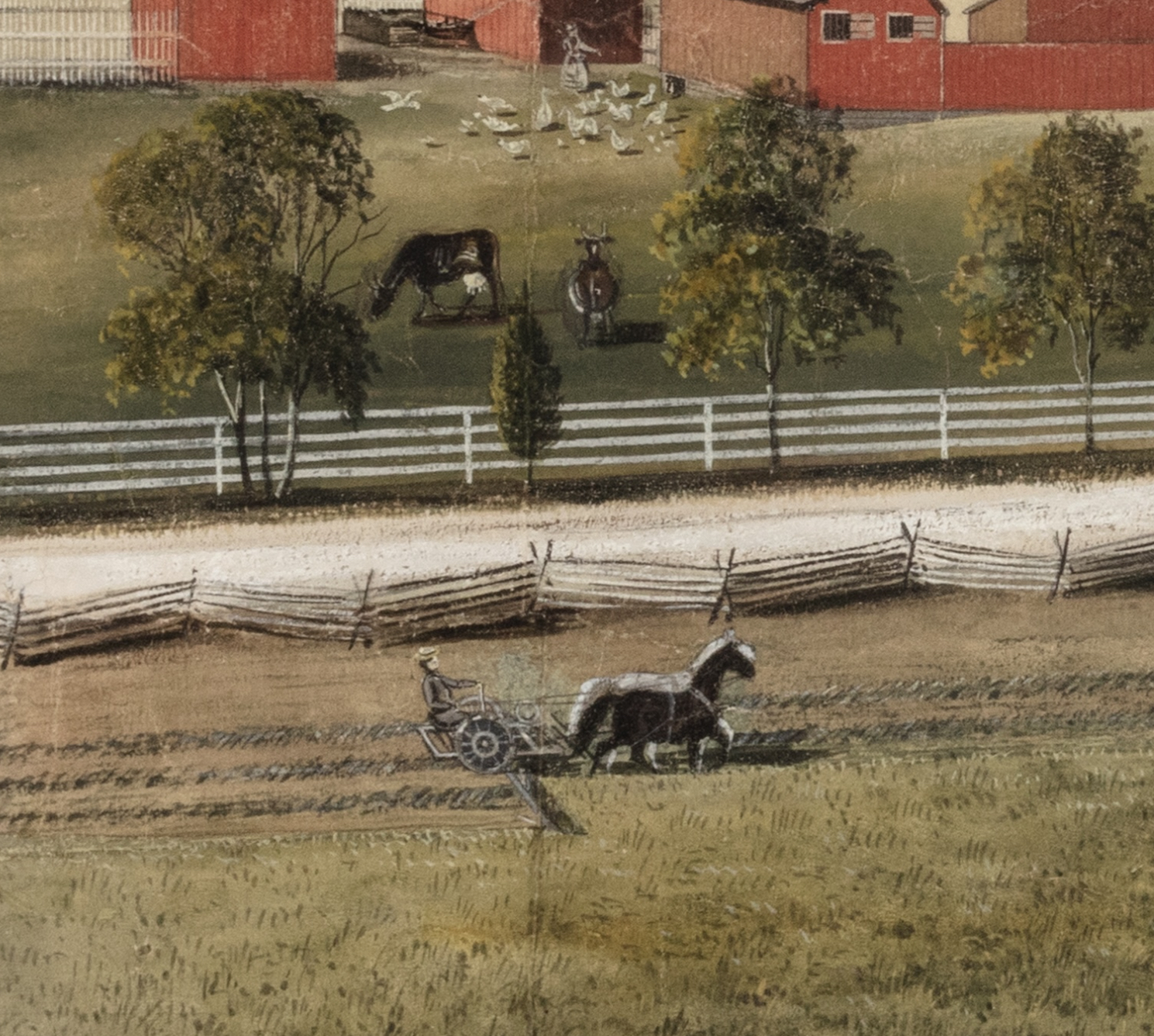
(left) Detail, Edward Lange (1846-1912), Panorama View of Huntington from Woolsey Avenue, 1881, Watercolor and gouache on paper, 24 x 30 in., Huntington Historical Society, 1990.14; (right) Detail, Edward Lange (1846-1912), Residence of Charles W. Scudder, 1880, Watercolor and gouache on paper, 13.5 x 17.5 in. (unframed); 20.125 x 24.125 in. (framed), Huntington Historical Society, 1980.165
This horse-drawn mower economized hay cutting by transferring the work from one individual to a team of horses and series of sharp blades. Using a sickle bar mower, fewer people could farm exponentially more acreage. As the mechanical revolution spread throughout all types of farming, commercial and industrial agriculture changed forever.
Edward Lange, (1846-1912) [Artist], Residence of Alexander S. Gardiner. Greenlawn. L.I., 1873(?), Watercolor and gouache on paper, 28 x 35.75 (framed), Greenlawn-Centerport Historical Association




